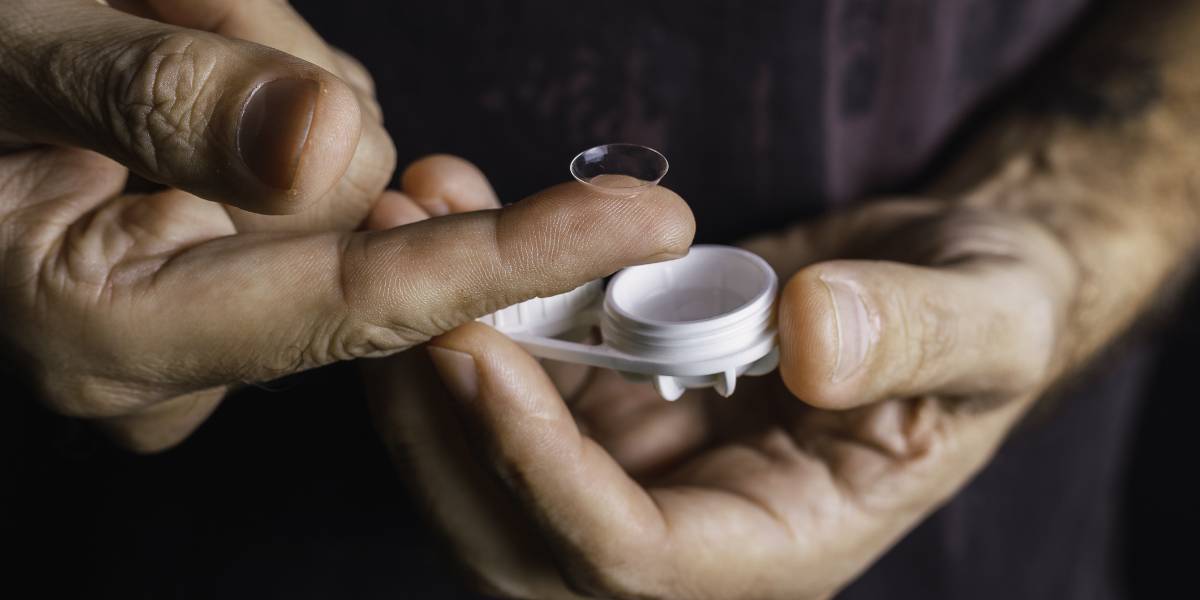World's first finger-prick test for detection of deadly brain tumors
SOURCE: HTTPS://INTERESTINGENGINEERING.COM/
NOV 06, 2023
Tear-charged batteries could soon power contact lenses
SOURCE: HTTPS://WWW.DIABETES.CO.UK/
AUG 29, 2023

Researchers may have found an innovative solution on how to discreetly power ‘smart’ contact lenses.
Electronically augmented contact lenses could soon be powered by a tear-fluid-charged ultra-thin battery, scientists from Singapore have said.
Currently, smart contact lenses are able to assess glaucoma and administer eye medication, as well as displaying images of virtual reality into the wearer’s vision.
However, there has been much debate about how smart contact lenses are powered, with some academics from Nanyang Technological University in Singapore saying it is far from ideal.
Senior author Dr Yun Jeonghun said: “The most common battery charging system for smart contact lenses requires metal electrodes in the lens, which are harmful if they are exposed to the naked human eye.
“Meanwhile, another mode of powering lenses, induction charging, requires a [metal] coil to be in the lens to transmit power, much like a wireless charging pad for a smartphone.”
Researchers from Nanyang Technological University in Singapore have found that a 0.5-mm-thin lens-integrated battery that incorporates water and a coating of an enzyme known as glucose oxidase is the most efficient way to power smart contact lenses.
An electrical charge is generated within the water in the battery when the flat, flexible device is immersed in the basal tear fluid that coats our eyes, which means the enzyme reacts with the sodium and chloride ions in that liquid.
During the study, the team of scientists performed lab tests on a simulated human eye. They found that the battery was able to generate a current of 45 microamperes and a maximum power of 201 microwatts, which is sufficient to wirelessly transmit data from a smart contact lens for at least 12 hours.
According to the academics, lithium-ion batteries typically last for 300 to 500 charge/discharge cycles. This is compared to a battery in its current form which lasts for up to 200 charge/discharge cycles.
The smart lenses should be put in a saline solution overnight for a minimum of eight hours because this means that they would start each day fully charged.
Read the full study in the journal Nano Energy.
LATEST NEWS
WHAT'S TRENDING


Data Science
5 Imaginative Data Science Projects That Can Make Your Portfolio Stand Out
OCT 05, 2022

SOURCE: HTTPS://INTERESTINGENGINEERING.COM/
NOV 06, 2023
SOURCE: HTTPS://WWW.SCIENCEDAILY.COM/
OCT 02, 2023
SOURCE: HTTPS://WWW.SCIENCEDAILY.COM/
SEP 20, 2023
SOURCE: HTTPS://WWW.SCIENCEDAILY.COM/
SEP 21, 2023
SOURCE: HTTPS://NATIONWORLDNEWS.COM/
SEP 05, 2023
SOURCE: HTTPS://WWW.MEDICALNEWSTODAY.COM/
AUG 30, 2023
SOURCE: HTTPS://WWW.SCIENCEDAILY.COM/
AUG 22, 2023
SOURCE: HTTPS://WWW.SCIENCEDAILY.COM/
AUG 21, 2023